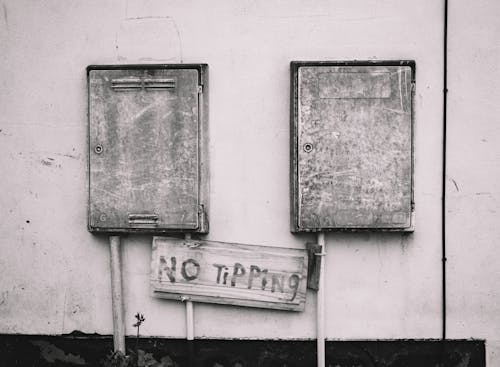Outdoor junction boxes play a critical role in protecting electrical connections from environmental hazards such as rain, dust, and extreme temperatures. Ensuring proper waterproofing is essential to maintain the safety, reliability, and longevity of your electrical systems. This comprehensive guide outlines the best practices, materials, and techniques to achieve effective waterproofing for outdoor junction boxes.

- Choose the Right Junction Box
Selecting the appropriate type of junction box is the first step in ensuring waterproofing. Not all junction boxes are designed for outdoor use, and using an indoor box can lead to failures.
Key Considerations:
- Material: Opt for weatherproof boxes made of corrosion-resistant materials like plastic, stainless steel, or aluminum.
- IP Rating: Choose a box with a high Ingress Protection (IP) rating, such as IP65 or higher, to safeguard against water and dust ingress.
- UV Resistance: Ensure the box is UV-resistant to prevent degradation from prolonged sun exposure.
- Seal All Entry Points
Cable entry points are among the most vulnerable areas for water ingress. Proper sealing of these points is crucial for effective waterproofing.
Best Practices:
- Use Grommets: Install rubber grommets or bushings around cables to create a tight seal.
- Apply Sealant: Use a waterproof silicone sealant to seal gaps around cable entries and knockouts.
- Cable Glands: For professional-grade installations, use IP-rated cable glands that match the junction box’s specifications.
- Install a Waterproof Cover
The cover or lid of the junction box should provide a reliable seal to prevent water from entering.
Steps to Ensure a Tight Seal:
- Check Gaskets: Ensure the box comes with a high-quality gasket around the lid. Replace worn or damaged gaskets.
- Secure Fasteners: Tighten all screws or latches evenly to compress the gasket uniformly.
- Locking Mechanisms: Consider boxes with locking mechanisms to maintain a consistent seal over time.
- Position the Box Properly
Even the best waterproof junction box can fail if it’s installed in a location prone to pooling water or direct exposure to heavy rain.
Optimal Placement Tips:
- Elevate the Box: Mount the box above ground level to prevent water accumulation.
- Install Under Shelter: Position the box under an eave or other protective structure to minimize direct exposure to rain.
- Angle for Drainage: Slightly tilt the box to allow water to drain away from entry points.
- Use Conduit Systems
Conduits provide an additional layer of protection for cables entering and exiting the junction box.
Installation Tips:
- Sealed Connections: Use waterproof connectors to join conduits to the junction box.
- Weatherproof Conduit: Opt for PVC or metal conduits designed for outdoor use.
- Conduit Drainage: Install drain holes or use breathable vent plugs in areas prone to condensation.
- Protect Against Condensation
Even a perfectly sealed box can develop moisture inside due to temperature fluctuations. Preventing condensation is crucial to maintaining electrical integrity.
Condensation Prevention Methods:
- Desiccants: Place silica gel packs inside the box to absorb moisture.
- Breather Vents: Use IP-rated vents that allow air exchange while blocking water entry.
- Temperature Regulation: Install a small heating element if the box is exposed to extreme cold.
- Regular Maintenance and Inspection
Waterproofing is not a one-time task. Regular maintenance ensures the junction box remains secure and functional over time.
Checklist for Inspections:
- Visual Inspection: Look for cracks, warping, or discoloration on the box and its components.
- Test the Seal: Check the gasket and entry points for wear or gaps.
- Remove Debris: Clear away dirt, leaves, or other debris that may compromise the box’s seal.
- Choose Waterproof Accessories
Using compatible, waterproof components enhances the overall effectiveness of the installation.
Recommended Accessories:
- Waterproof Switches and Connectors: Ensure all electrical components connected to the junction box are also weatherproof.
- IP-Rated Plugs: Use plugs and sockets that match the box’s waterproofing level.
- Protective Covers: Install additional protective covers for external components.
- Test Before Finalizing Installation
Testing the waterproofing measures ensures that the box is ready to withstand outdoor conditions.
Testing Methods:
- Water Spray Test: Simulate rainfall using a hose to check for leaks.
- Submersion Test: For high-IP-rated boxes, partially submerge the box in water to confirm its integrity.
- Electrical Test: Verify that all connections function correctly and safely after exposure to water.
- Document the Installation
Maintaining records of your installation can simplify future maintenance and upgrades.
What to Document:
- Component Details: Record the box’s IP rating, material, and accessories used.
- Location and Orientation: Note the exact placement and mounting angle.
- Maintenance Schedule: Set reminders for regular inspections and gasket replacements.
Common Mistakes to Avoid
While waterproofing an outdoor junction box, avoid these pitfalls:
- Using Indoor Boxes Outdoors: Always select a box specifically designed for outdoor use.
- Overtightening Screws: This can deform the gasket and compromise the seal.
- Neglecting Cable Management: Poor cable organization can strain seals and connectors.
Conclusion
Waterproofing an outdoor junction box is essential for protecting your electrical systems from environmental damage and ensuring long-term reliability. By choosing the right materials, sealing entry points effectively, and performing regular maintenance, you can achieve a robust and durable installation. Always prioritize safety and consider consulting a licensed electrician for complex setups.
With careful planning and execution, your outdoor junction box can withstand the elements and provide safe, uninterrupted service for years to come.
